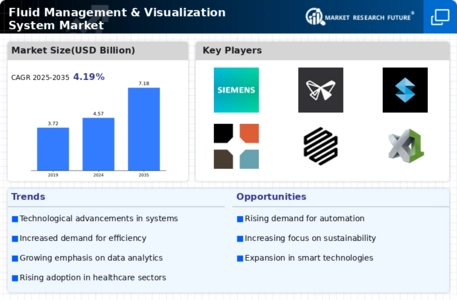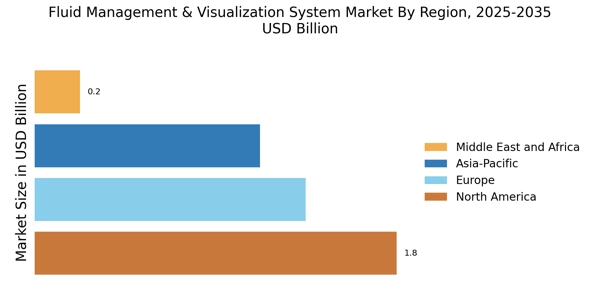Regulatory Compliance and Safety Standards
Regulatory compliance and safety standards are becoming increasingly stringent across various industries, thereby driving the Fluid Management & Visualization System Market. Companies are required to adhere to environmental regulations and safety protocols, which necessitate the implementation of effective fluid management systems. This is particularly relevant in sectors such as chemical manufacturing and waste management, where improper fluid handling can lead to severe consequences. As a result, organizations are investing in advanced fluid management solutions to ensure compliance and mitigate risks. The market is likely to expand as businesses recognize the importance of maintaining safety and environmental standards, with an expected growth rate of around 7% annually.
Growing Focus on Data-Driven Decision Making
The growing focus on data-driven decision making is significantly influencing the Fluid Management & Visualization System Market. Organizations are increasingly leveraging data analytics to gain insights into their fluid management processes, which allows for informed decision-making and strategic planning. This trend is particularly prominent in industries such as energy and utilities, where data visualization tools can enhance operational transparency and efficiency. The demand for systems that provide real-time data analytics is expected to rise, as companies seek to optimize their fluid management strategies. This shift towards data-centric approaches could potentially result in a market growth trajectory that aligns with the increasing adoption of digital technologies in fluid management.
Technological Advancements in Fluid Management
Technological advancements are playing a crucial role in shaping the Fluid Management & Visualization System Market. Innovations such as advanced sensors, automation, and artificial intelligence are enhancing the capabilities of fluid management systems. These technologies enable more precise monitoring and control of fluid dynamics, which is essential for industries like oil and gas, pharmaceuticals, and food processing. The integration of these technologies is expected to drive market growth, as companies increasingly adopt sophisticated systems to improve their operational efficiency. The market is anticipated to witness a surge in demand for smart fluid management solutions, which could potentially lead to a market valuation exceeding USD 5 billion by 2030.
Rising Demand for Efficient Resource Management
The increasing need for efficient resource management in various industries appears to be a primary driver for the Fluid Management & Visualization System Market. Organizations are striving to optimize their operations, reduce waste, and enhance productivity. This trend is particularly evident in sectors such as manufacturing and healthcare, where fluid management systems can lead to significant cost savings. According to recent estimates, the market for fluid management systems is projected to grow at a compound annual growth rate of approximately 8% over the next five years. This growth is likely fueled by the necessity for real-time monitoring and control of fluid systems, which enhances operational efficiency and minimizes downtime.
Increased Investment in Infrastructure Development
Increased investment in infrastructure development is emerging as a significant driver for the Fluid Management & Visualization System Market. Governments and private entities are allocating substantial resources towards upgrading and expanding infrastructure, particularly in water management and energy sectors. This investment is likely to create a demand for advanced fluid management systems that can efficiently handle the complexities of modern infrastructure. As urbanization continues to rise, the need for effective fluid management solutions becomes more pronounced, leading to a projected market growth rate of approximately 6% over the next few years. The emphasis on sustainable infrastructure development further underscores the importance of innovative fluid management technologies.


















Leave a Comment